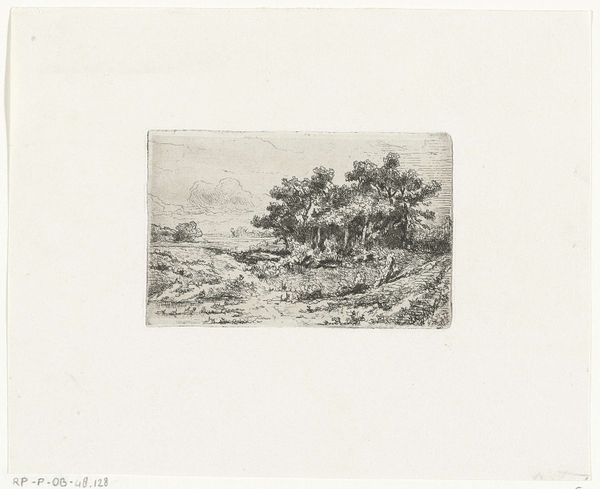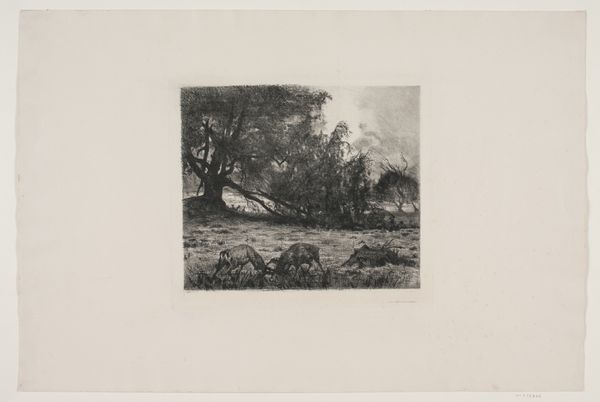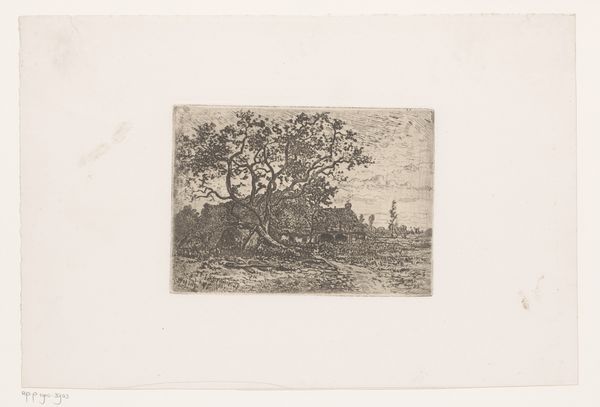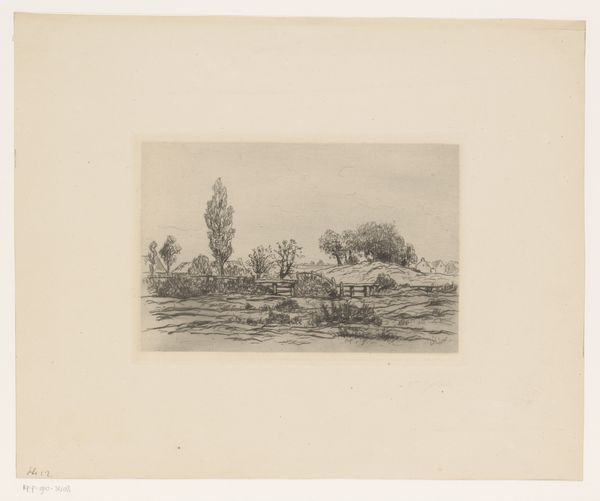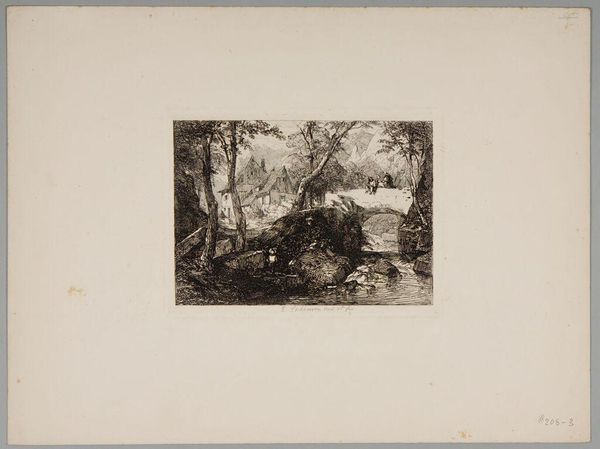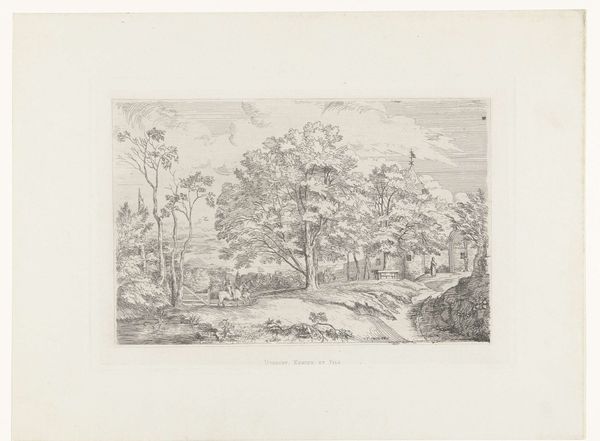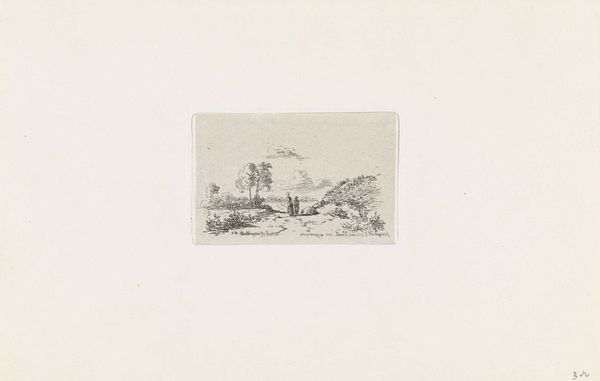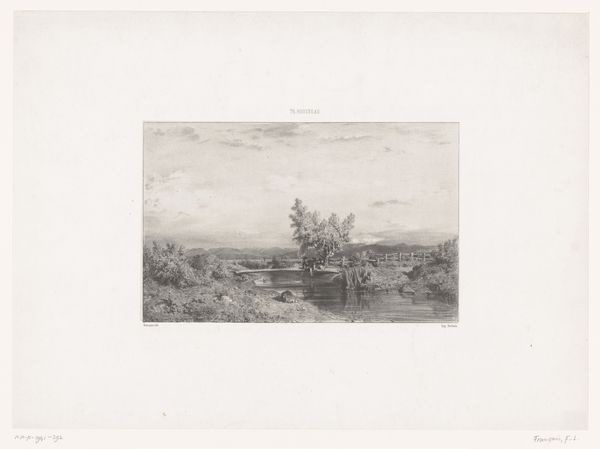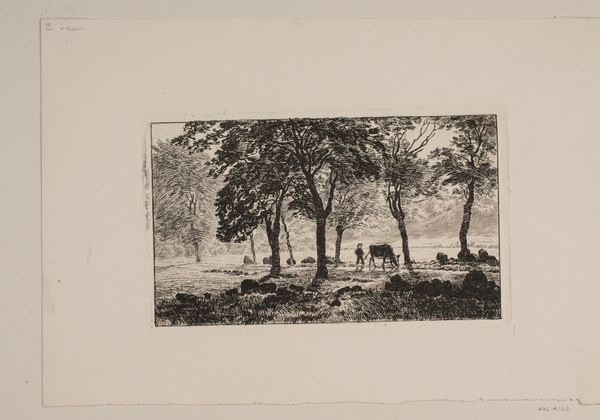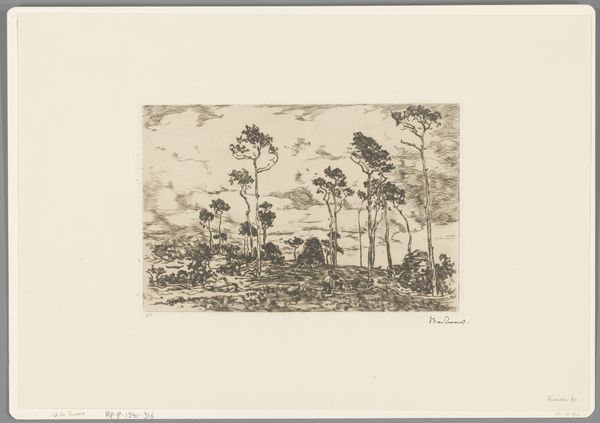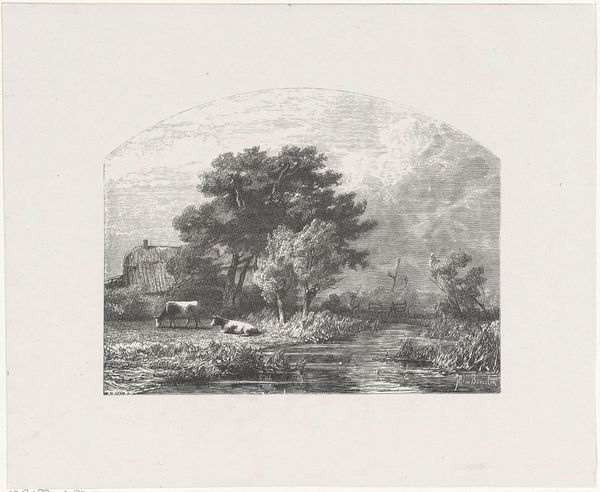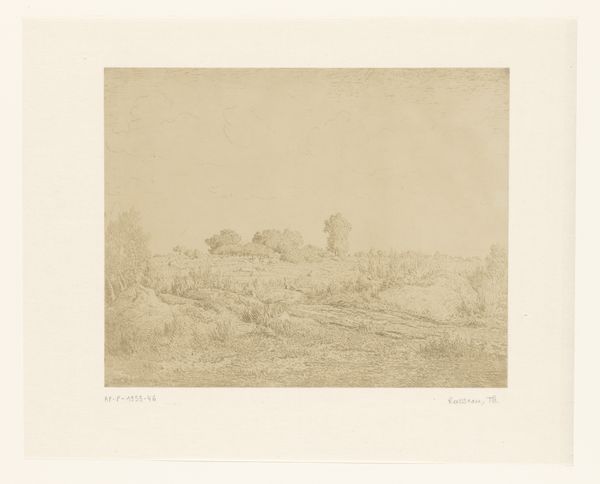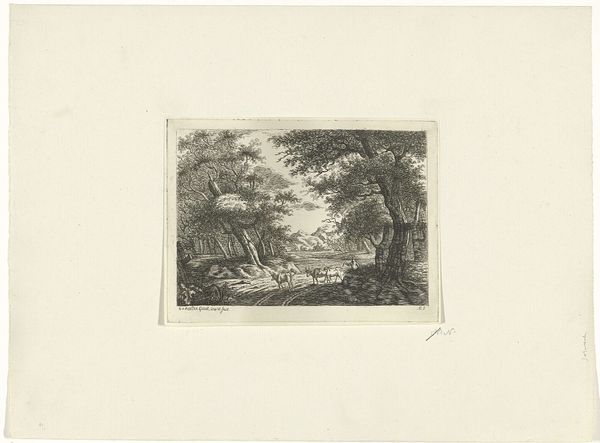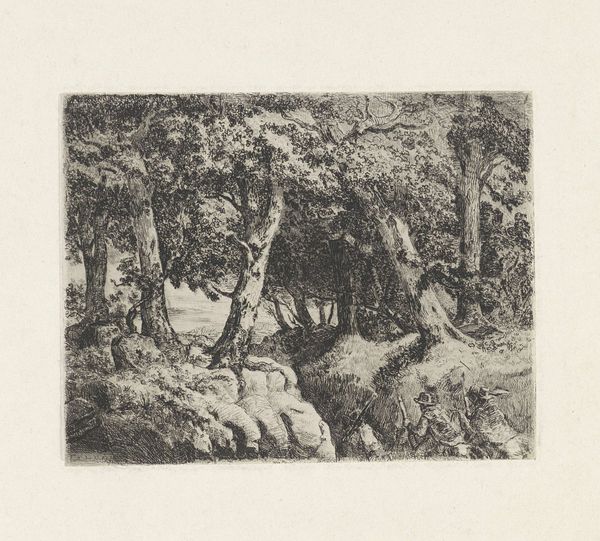
#
white colour balance
#
photo of handprinted image
#
shape in negative space
#
light pencil work
#
white dominant colour
#
light coloured
#
repetition of white
#
ink colored
#
repetition of white colour
#
remaining negative space
Dimensions: height 148 mm, width 237 mm
Copyright: Rijks Museum: Open Domain
Editor: So, this is "Huizen aan de river," or "Houses on the River," created sometime between 1855 and 1904 by Arnoud Schaepkens. It looks like an etching, with incredibly fine lines. There’s something almost dreamlike about the scene, partly due to the muted tones. What stands out to you in terms of the artist's approach? Curator: Well, the first thing I notice is the printmaking process itself. How does the method of production influence our reading? Consider the labor involved in creating this intricate scene, etched line by line. The labor creates the market which enables the work’s continued survival. This wasn't simply about artistic inspiration; it was a craft, a skilled form of labor that democratized image production for that era. The print could be multiplied, sold at relatively affordable cost to bourgeois clienteles and shipped across Europe, making the subject accessible. Do you see that influencing its context? Editor: Absolutely! So, it’s not just about the depiction of the river houses, but the means by which that depiction was made accessible. Does that challenge the idea of 'high art' versus a more utilitarian, craft-based production? Curator: Precisely. Etching allowed for relatively mass production and distribution, moving art out of the exclusive realm of unique paintings. Look at how the artist uses the very materiality of the etching—the ink, the paper—to create texture and depth. It’s about the relationship between the materials, the artist’s hand, and the society consuming it. The artist would make this a part of their business model, no? Editor: It gives me a lot to think about. I’m going to examine how those river houses might speak more to the means of making than to what it's presenting. Curator: Good. Seeing this image not just as a representation but as a result of production—the interaction of labor, material, and market—helps reveal its place in a larger social and economic context.
Comments
No comments
Be the first to comment and join the conversation on the ultimate creative platform.
